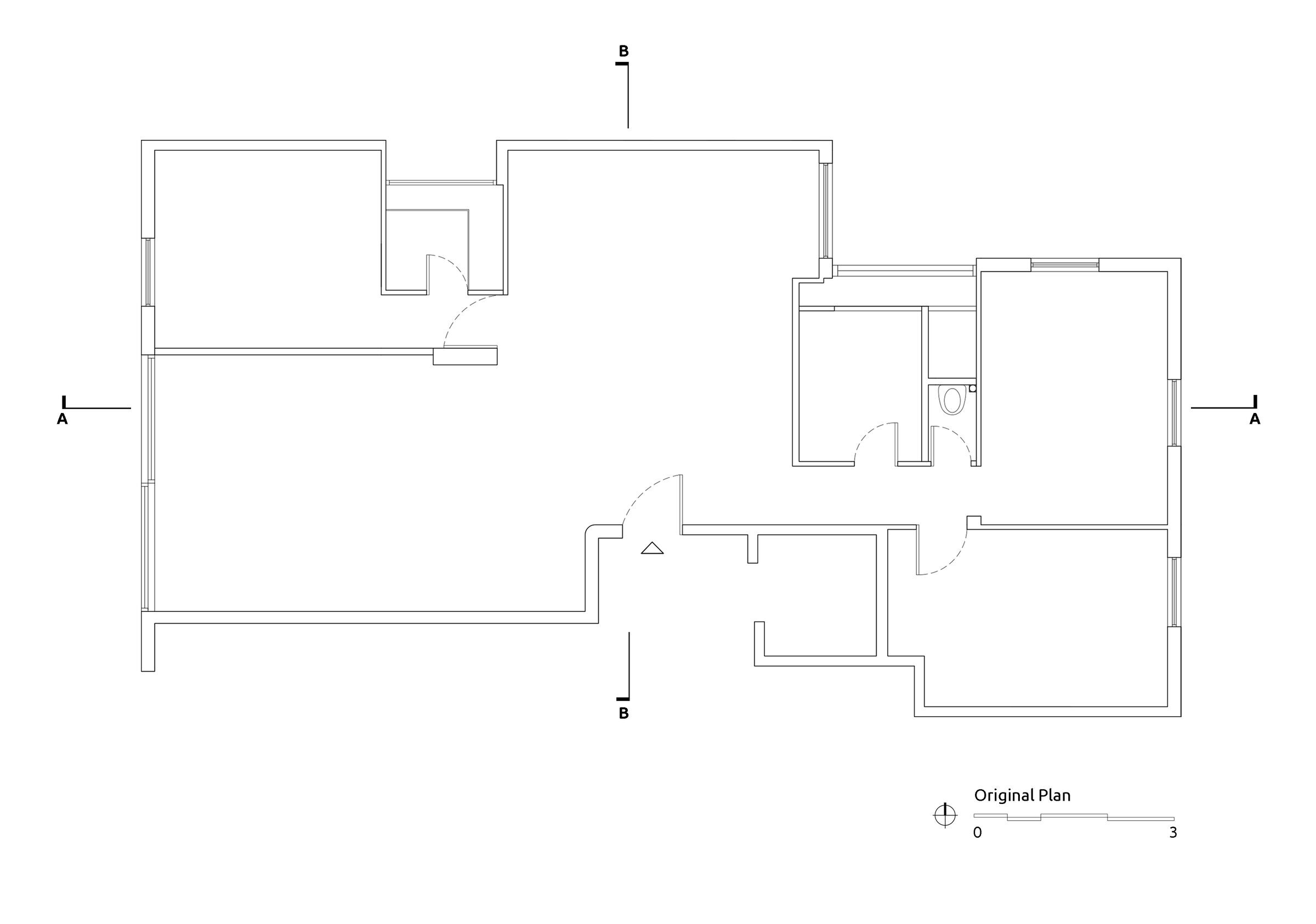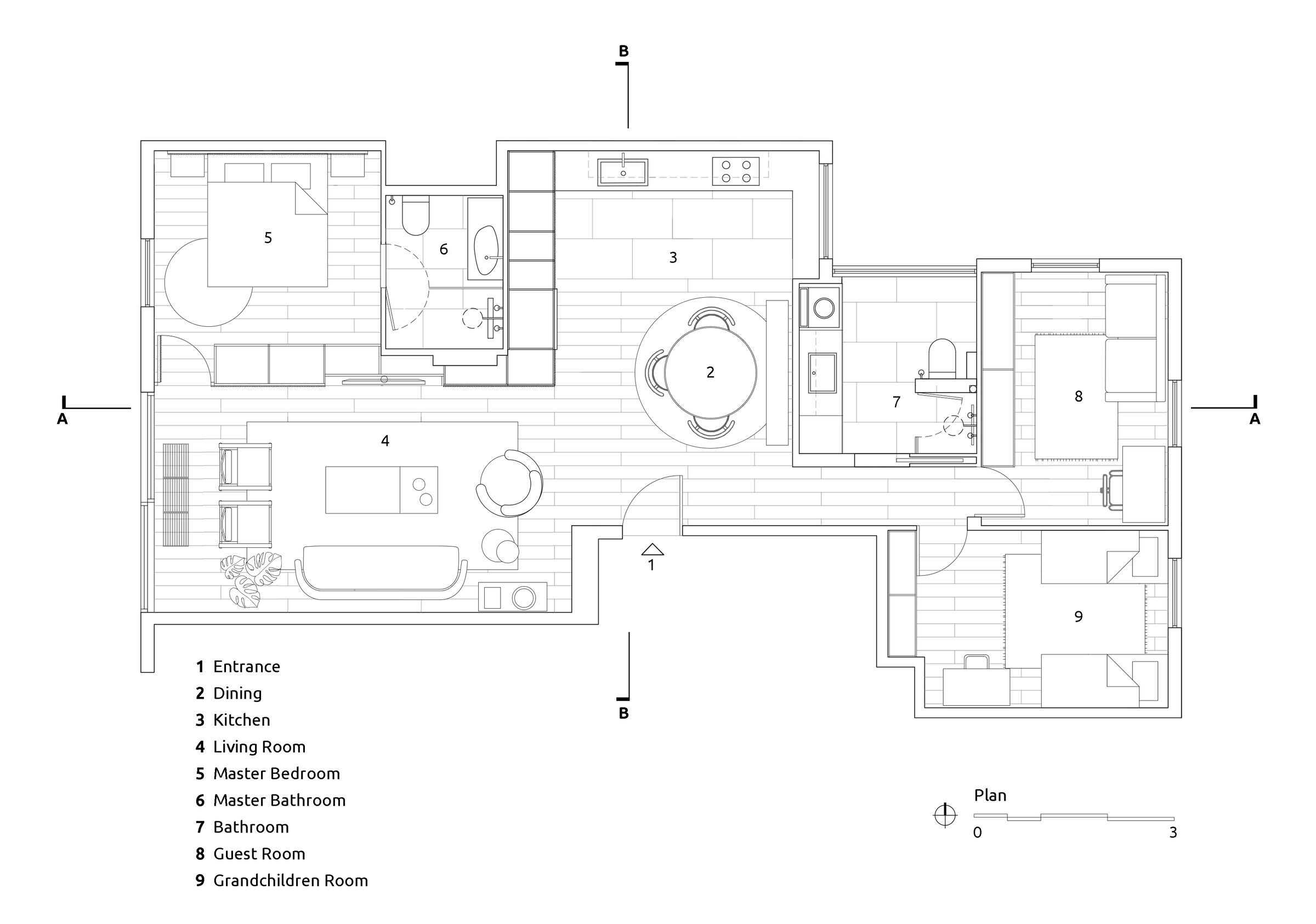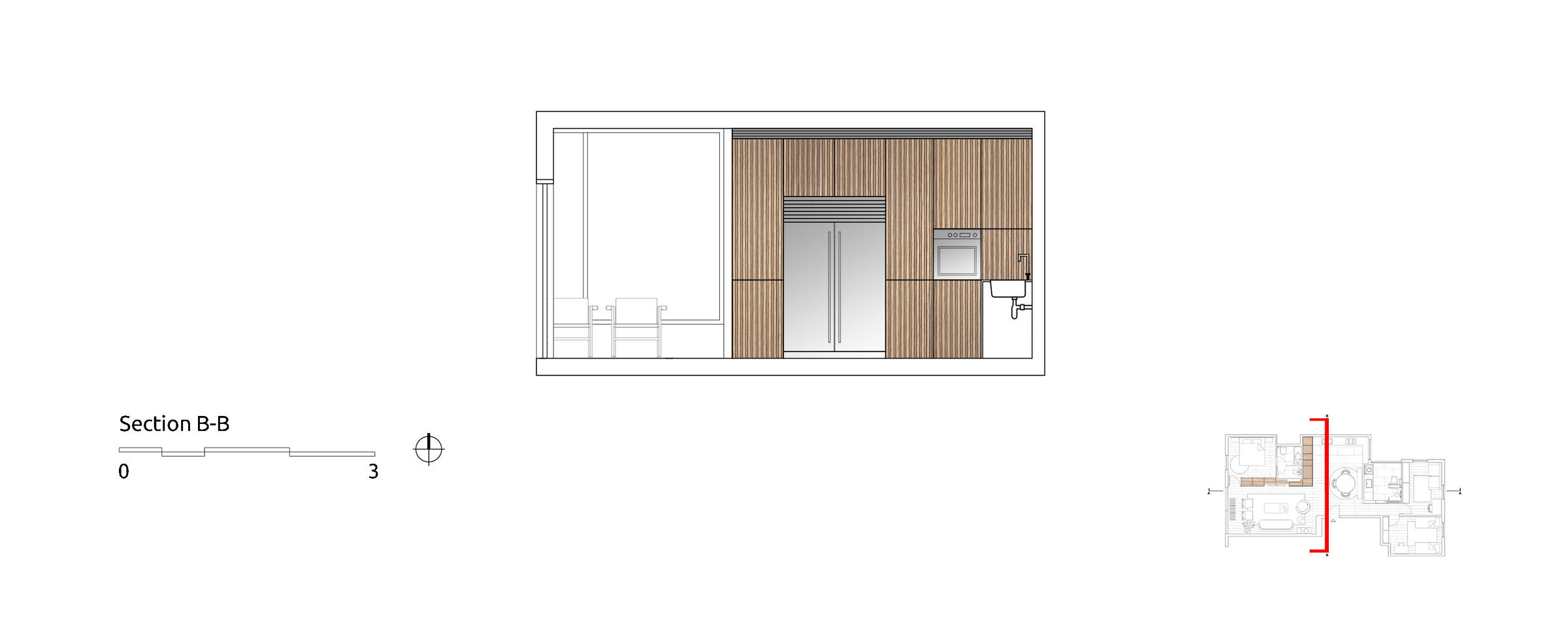In the heart of Tel Aviv, a city that never sleeps, there is an asylum of tranquil nature, creating a bubble of utopia, an opportunity to slow down and relax. Henkin Shavit Studio stands behind the planning of a quiet temple, according to the request of their senior clients. A dreamy place simulating an oasis has been created. This living space emphasizes the idea of detaching a busy outdoor, culturally dense, colorful and restless world into a natural atmosphere of a still monochrome environment indoors.
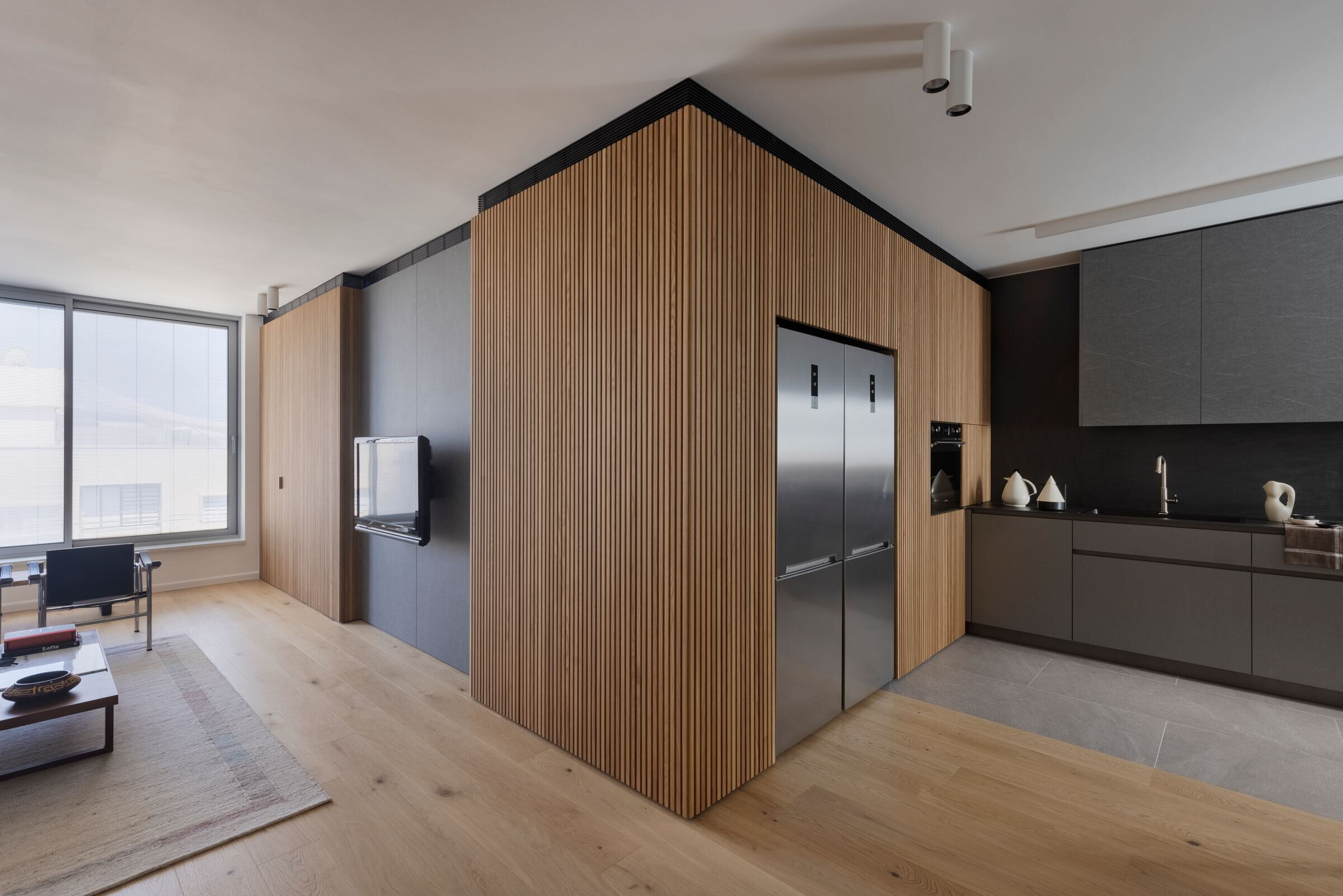
The updated plan referred to the existing apartment as a box that wraps with its outer walls an inner box which, again, creates the feeling of detachment, gently using the element of wood partitions. That deciphers the optimal functions of the apartment design. The specific detachment concept is expressed in the coherence between connection and disconnection of two natural materials - oak tree and grey stone.
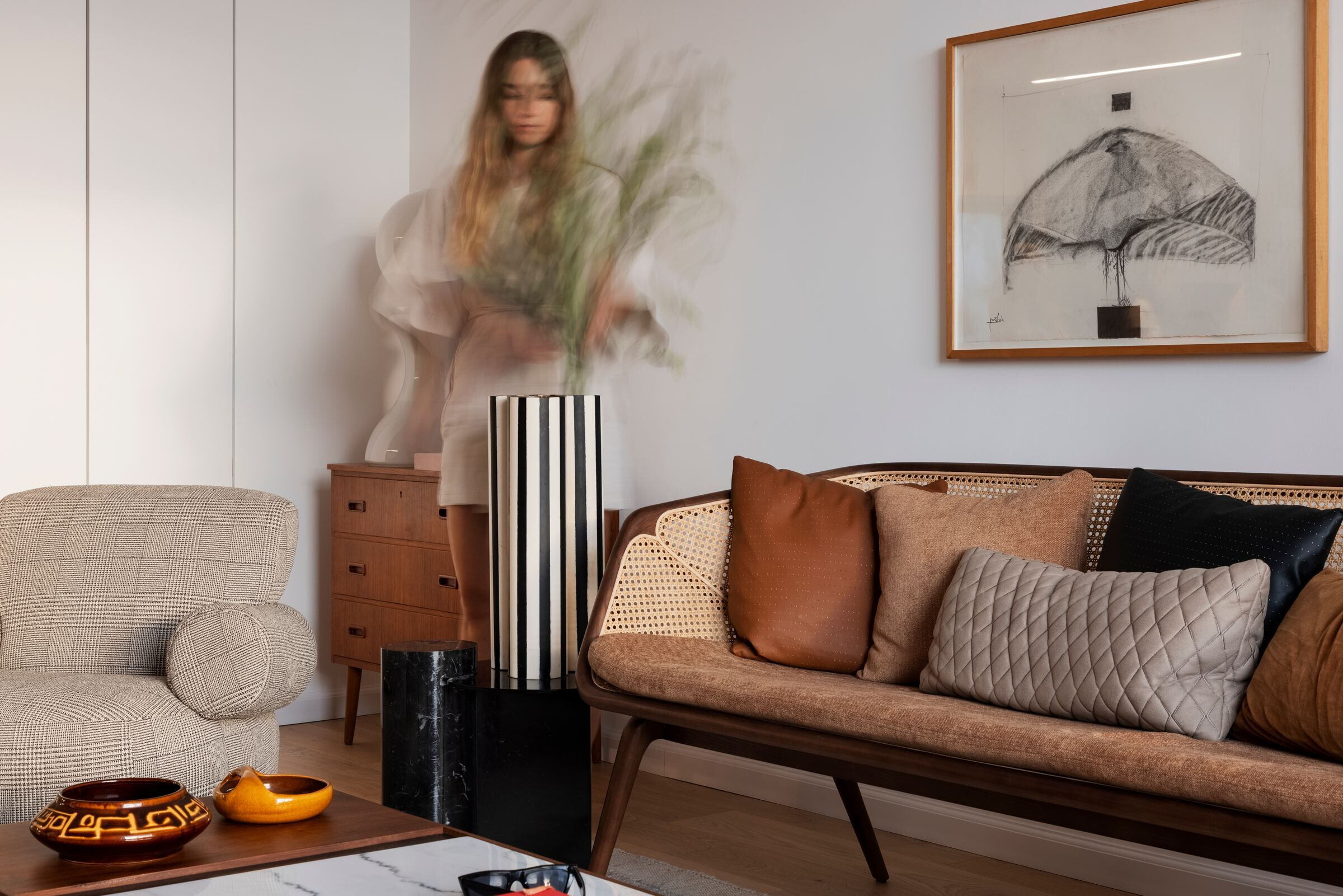
The complicated carpentry work consists of material separation, which creates a new vertical rhythm, unified and calming. The vertically grooved oak wood is used like a unified puzzle, it's pieces separately complementing each other into a whole piece. This element is seen as the kitchen wall cover and recreates itself as a double partition between the bedroom and the living room. This partition includes a secret aisle door, the magic entrance into the quietest corner of the apartment - the master bedroom. Behind this door you can find a white wardrobe with oak round handles creating a full circle. In front of the wardrobe there is the back of the bed, made of multilayer birch. The detachment motive returns in the back of the bed as disconnected by 45 degree cut boards, bonded back together to create one whole grooved surface.
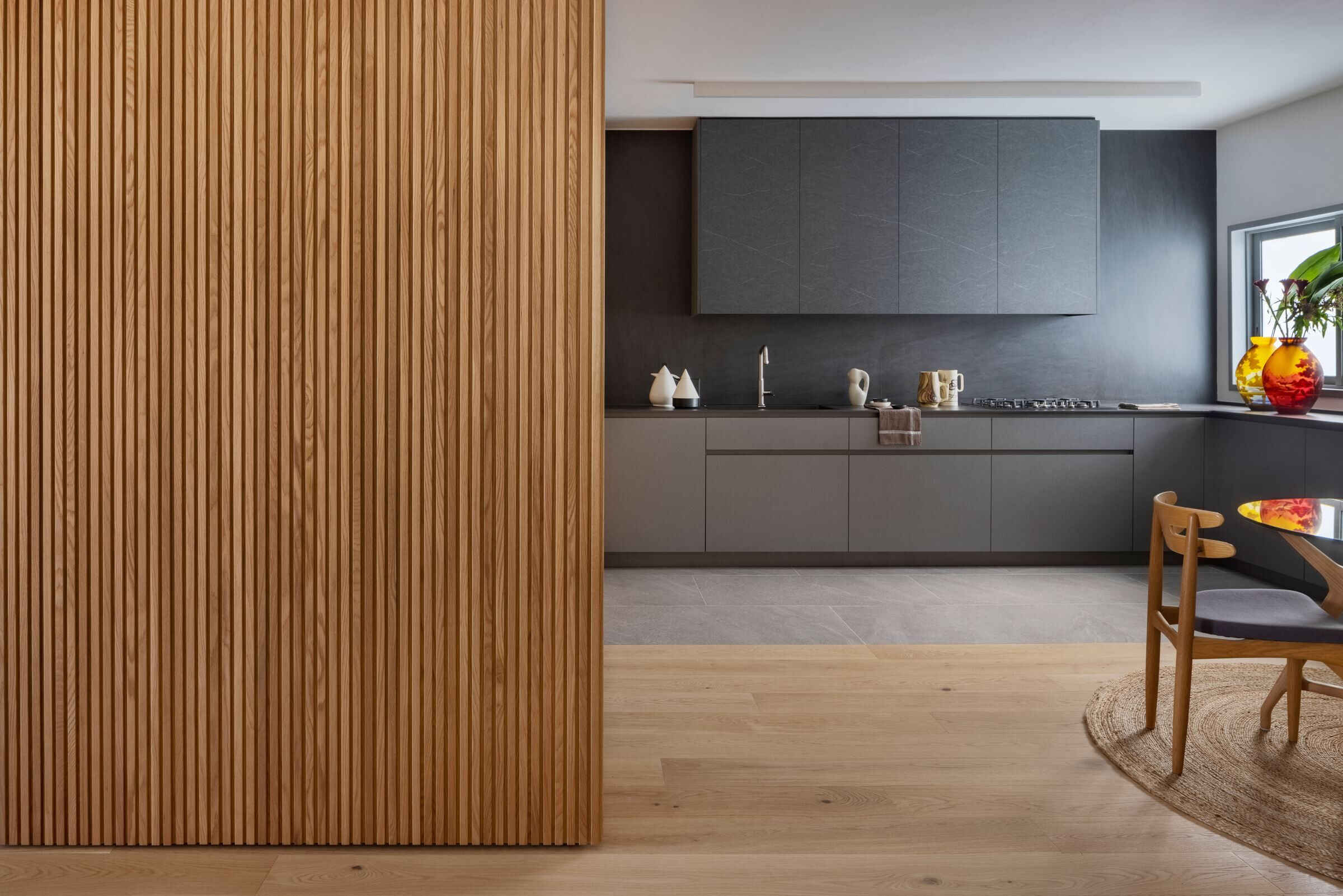
In the original apartment there was only one bathroom. Another challenge the designers, Henkin Shavit, faced was to create an additional private bathing space for the owners. The new Bathing space is connected to the master bedroom. The door is sandblasting glass, the walls and floor surface are covered by grey stone tiles, which create absolute harmony. The classic sink cabinet of the Italian brand ‘Falper’ completes the pleasant calm mood.
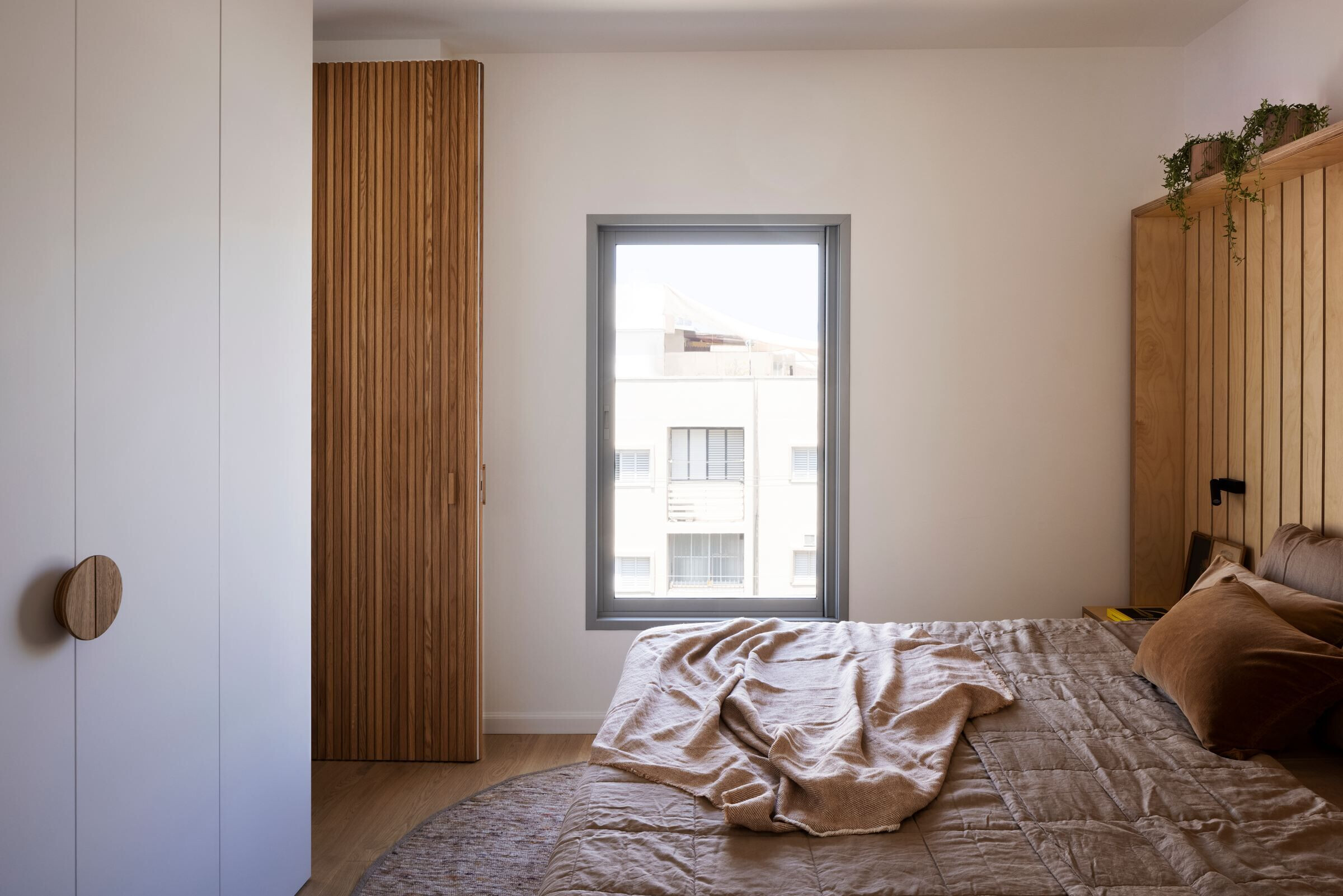
At the apartment's entrance there is a round dining table seated on a natural rope carpet. Above it we can notice a minimalistic lamp of the designer Asaf Weinbroom, reflected on the round table glass plate seated on Danish wooden skeleton legs. Hans Wagner chairs from the 50’s and renovated school benche from the 60’s are elegantly complementing the dining experience. The dining room is surrounded by the kitchen, which has on one side a granite stone-covered work surface. On the other side there are high closets with a stainless fridge and oven. This closet wall is detached through it’s all length from the ceiling with a black strip-line of the air conditioning.
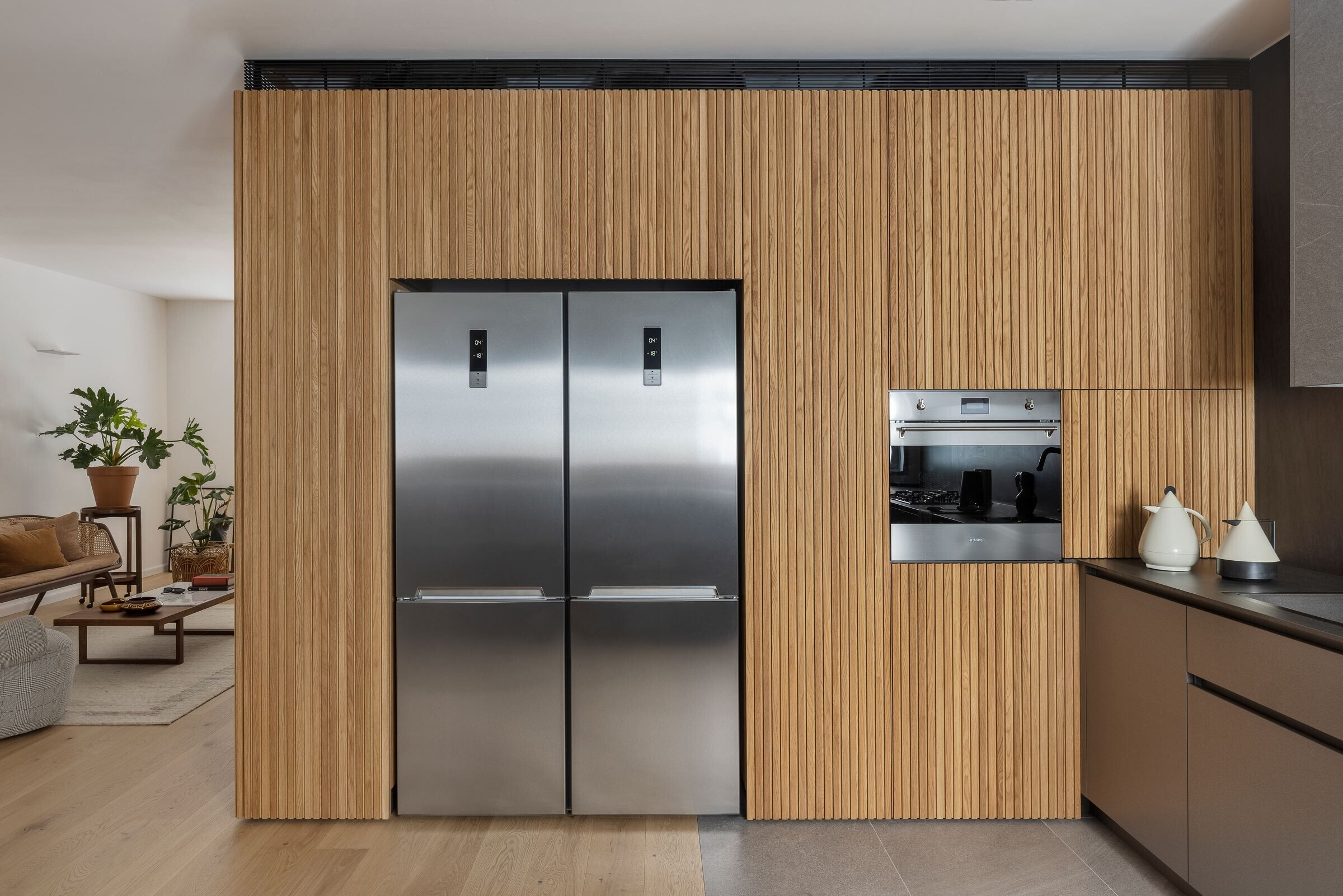
Right to the entrance there is a narrow corridor, leading to a guest room and to the guest bathroom, aiming for children, grandchildren and any welcomed guests. In the bathroom there is a birch closet that contains a sink, a mirror and destined hidden space for a washer and a dryer.
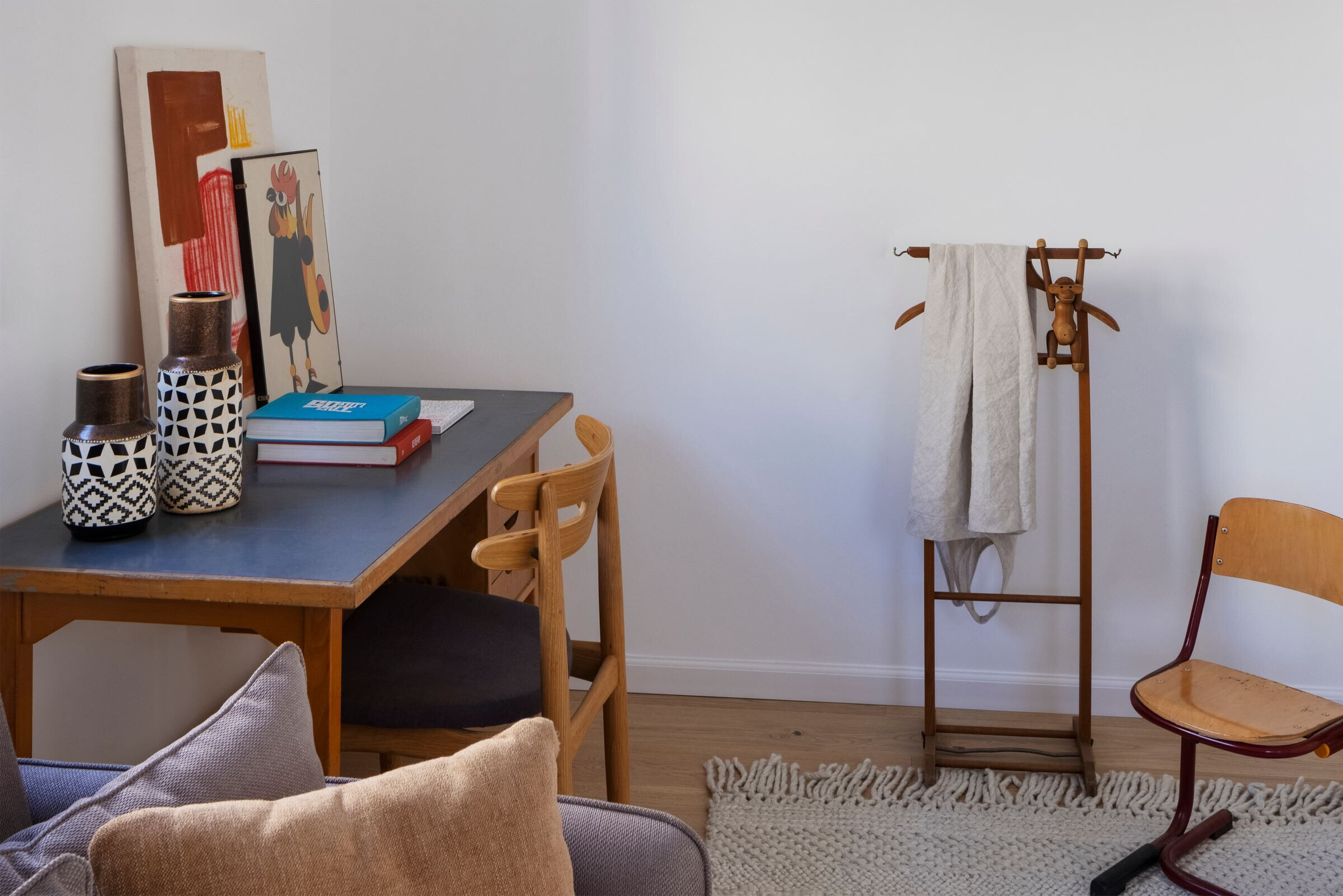
The whole apartment flooring is natural oak. The living room is confined by a handmade ‘Piazza’ rug of the German brand ‘Pulig Rugs’ that compliments the flow of the bright and natural shades of the parquet. On top of the rug a light sofa is seated with straw putty next to Le Corbusier armchairs, model LC 1 from the 30’s. A wood and stone living room table completes the natural atmosphere.
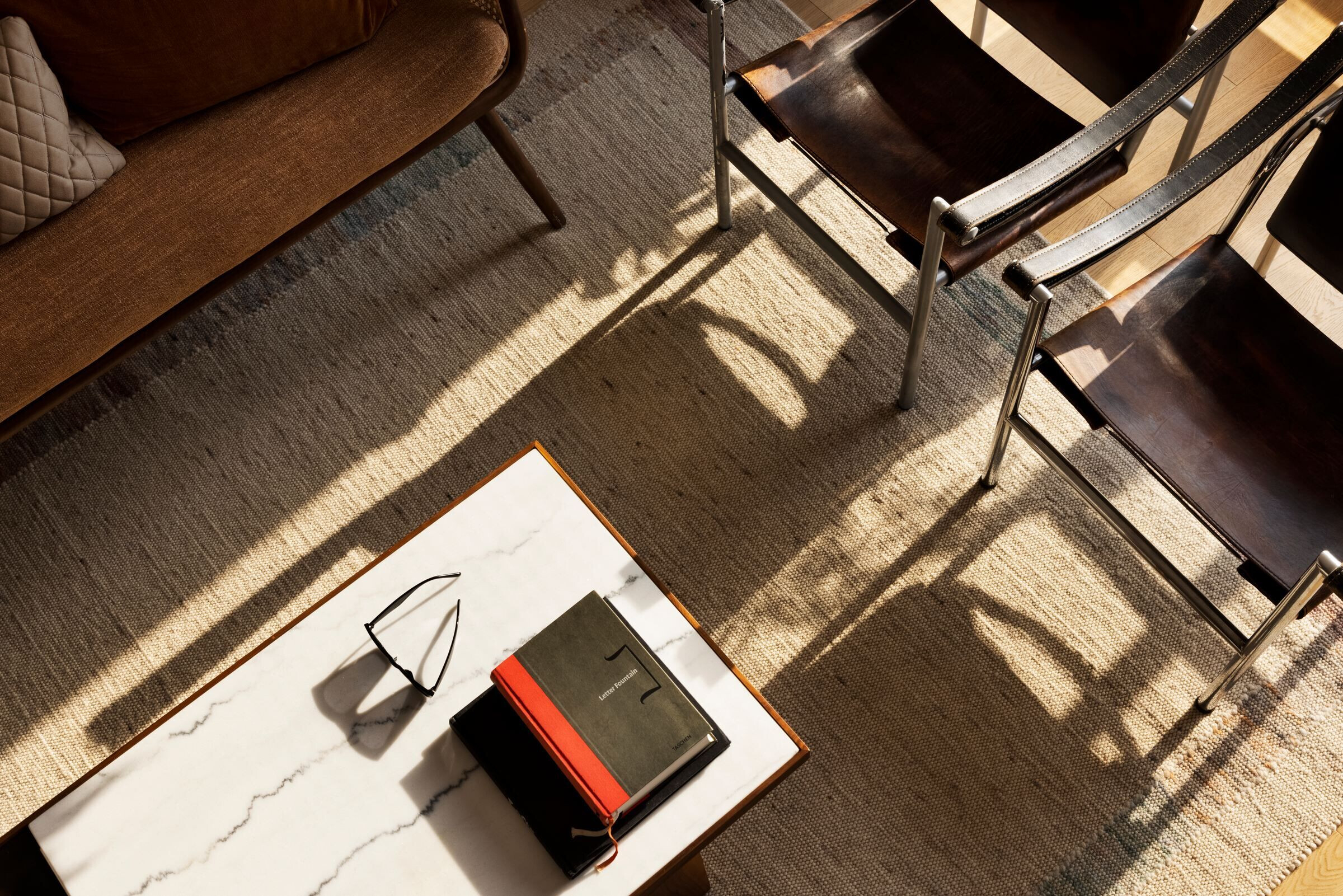
The tranquil art of Orit Goldman is gently ornamenting the white walls. In the living room corner a teak wooden dresser from the 60’s is placed along with a lamp from the 70’s by the Italian designer Carlo Nason. Glass vases as a tribute to the Art Nouveau artist Émile Gallé were placed in the kitchen and in the living room, which contributed a natural volume to the classic design as a whole.
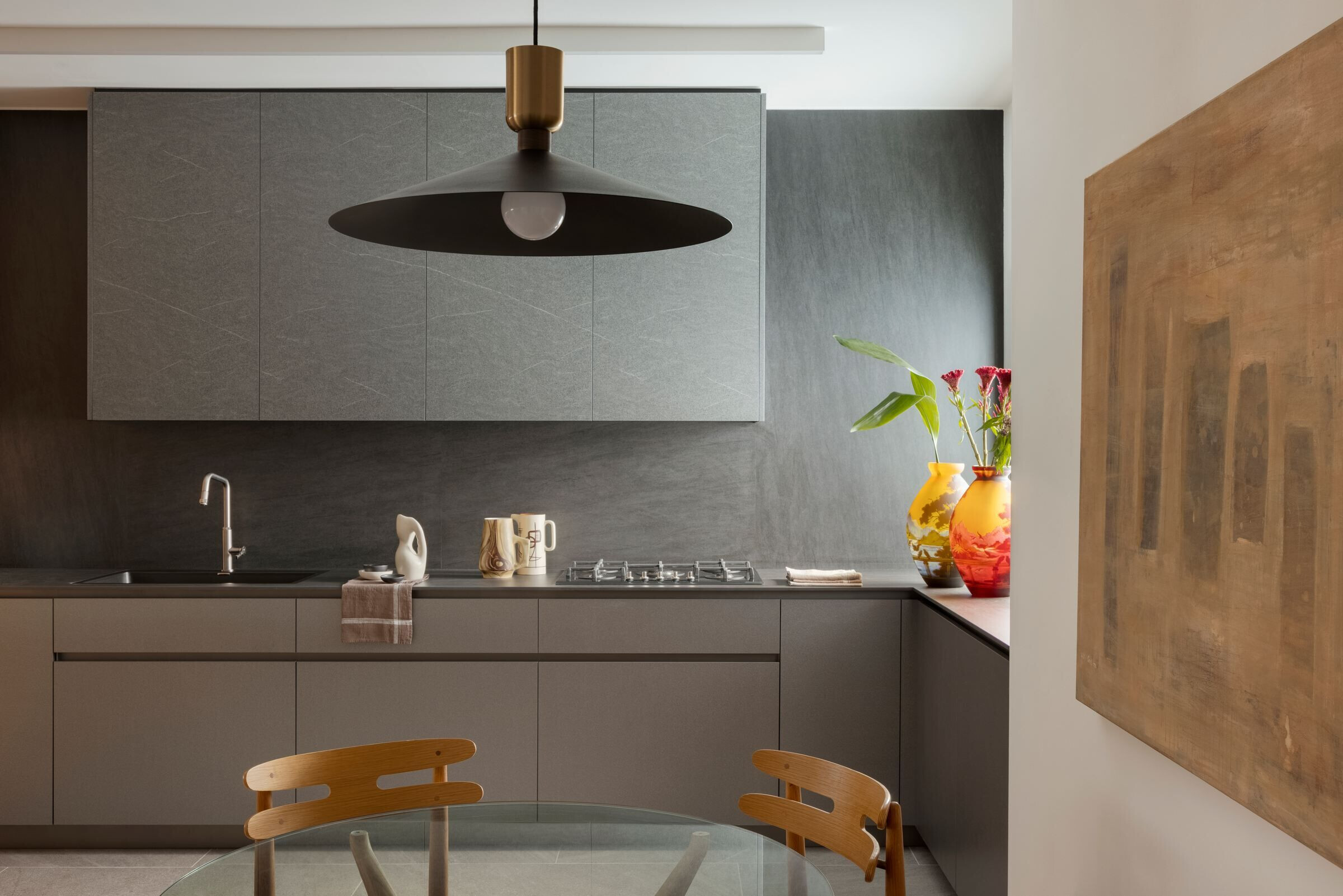
The duet of the warm materials (oak tree, birch) countering the cold grey materials (grey granite, steel) creates this temple of calmness, detached from the constant movement of the outer world.
